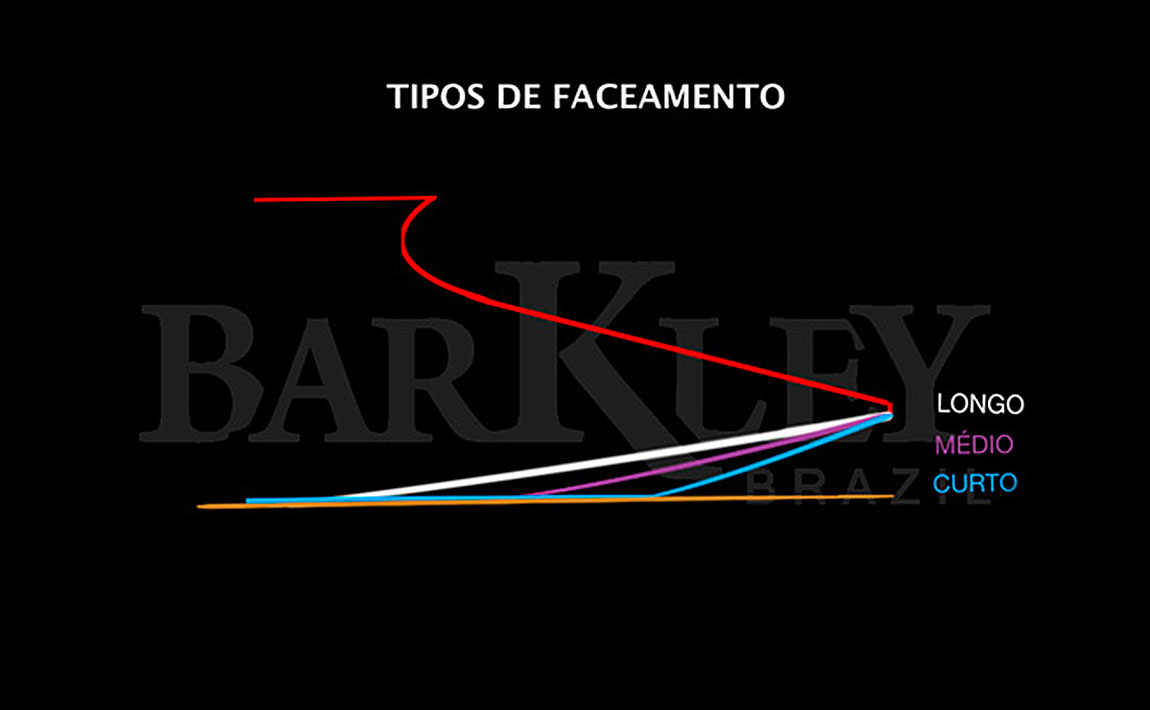
Mouthpiece Faceplate
The Facing Definition
Facing, is the closest translation we have to the word Facing. Facing, is where the craftsman / maker or refacer * fine-tunes the tip of the mouthpiece. This curve has to be uniform and parallel to generate excellent joint results.
Facing is divided into three parts:
• Table: Where the pick meets the mouthpiece and seals the air.
• Break Point: Last point of contact between reed and mouthpiece.
• Facing Curve: This is where there is an opening between the reed and the mouthpiece. And this curve can be seen on any mouthpiece when viewed from the side.
TYPES OF CURVES
Facing plays a crucial role in the response each mouthpiece will have. It determines how free or resistant it will be when blowing the mouthpiece, as well as the type of response the mouthpiece will give on the upper, middle and lower register of the instrument.
In general, curves are short, medium or long:
• Manufacturers that have used short facing include: Selmer Soloist Mouthpieces with E to H openings and all Brilhart Mouthpieces.
• Manufacturers using medium facing include: All Otto Link mouthpieces after 1950, most Meyer mouthpieces, Berg Larsen "SMS".
• And manufacturers who used long facing include: Otto Link mouthpieces before 1950 and Berg Larsen 'M' mouthpieces.
Short Facing emphasizes the upper register (treble), making it easier. This is partly due to the fact that the front and thinner part of the reed is vibrating. The short front creates less stamina and strength when touching.
The downside of this facing is that the reed may look very light, but it becomes harder to fill the sound saxophone and sub-tones as well.
At first, you may feel that a Short Facing is easy to play, however, after some time of use, most people find it difficult to keep playing with a Short Facing Mouthpiece.
It's like driving a race car on city streets - something very hard to control.
Long Facing accentuates the bass record of the saxophone. The sound becomes especially large (full) and consistent across all records. Because in this case, more of the thick part of the reed is vibrating and there is more resistance and counterforce being generated in the tudel as it blows. A long facing makes the mouthpiece look like a larger tip opening than it really is. Another benefit or disadvantage, depending on how you look at it, is that the long Facing curve allows notes to be more flexible. This is because most of the pick inside the mouth is susceptible to jaw pressure. Many saxophonists in the early 1940s and early 1950s played mouthpieces with small tip openings and very long facing. This setup produces a good-sounding “fat” sound that sounds like our larger tip openings with a medium curve.
Medium Facing is the balance between short and long facing and is what most mouthpieces use today. The medium facing creates a top and bottom record of quick responses, and is also easy to play. Reeds are less demanding with an average curve. You will find more reeds made for this type of Facing. Many musicians have chosen larger mid-facing tip openings to get the same great sound as the long facing, but the ease of play offered by the mid-curve. Medium facing is the most common for good reason.
Overall, it is the most versatile and easy to touch. One exception, a high baffle mouthpiece with a short curve will stifle the airflow through it. Thus long baffle mouthpieces with a long facing tend to play like those of medium baffles with a medium coating. It is also important to note that different manufacturers mention their facing differently. For example, the Berg Larsen 'M' curve or average is actually a long curve, and your SMS, or short curve, is really a standard average curve.
